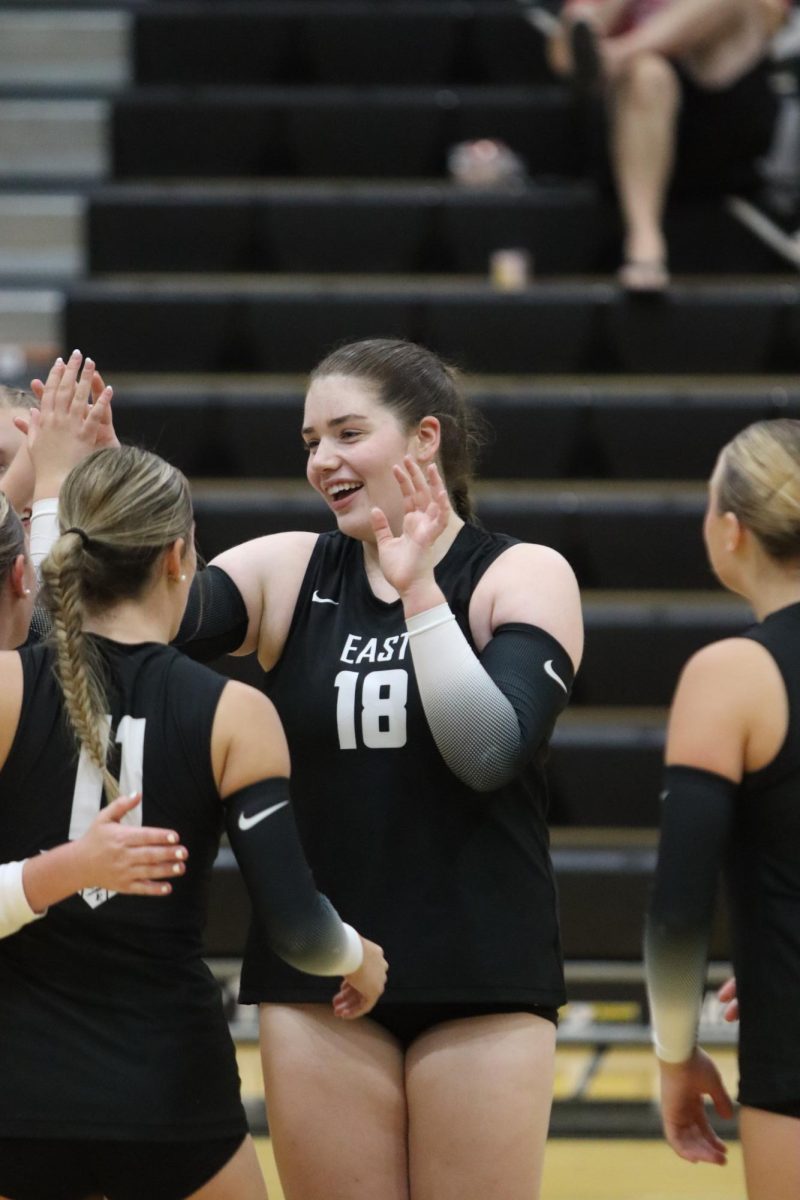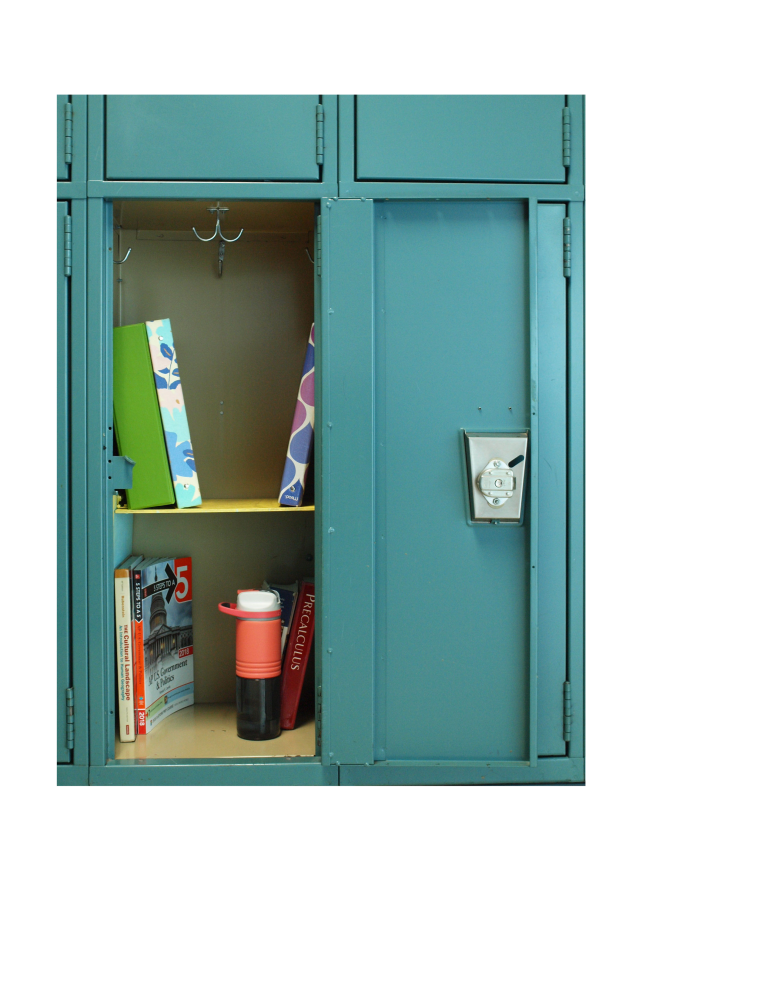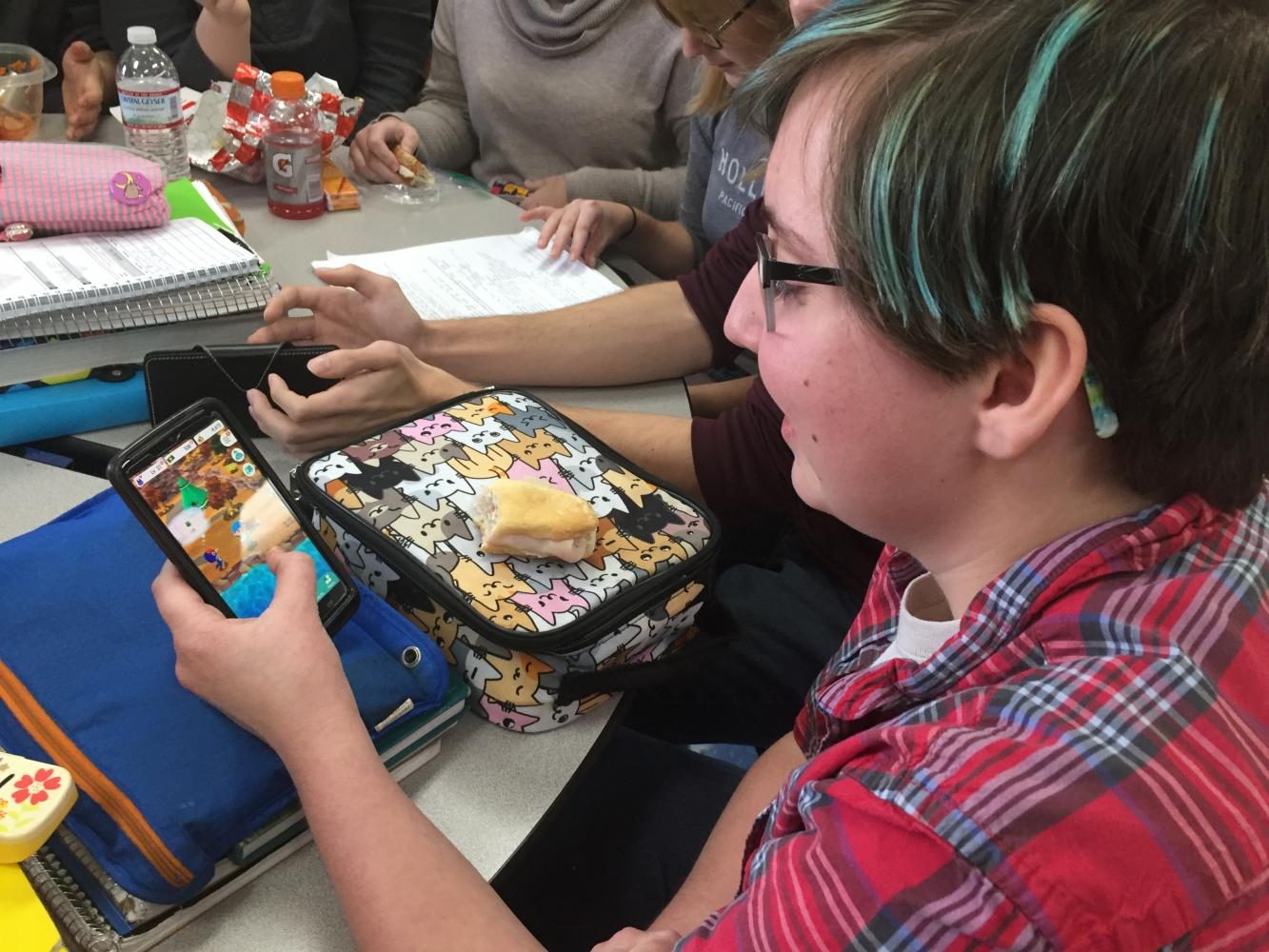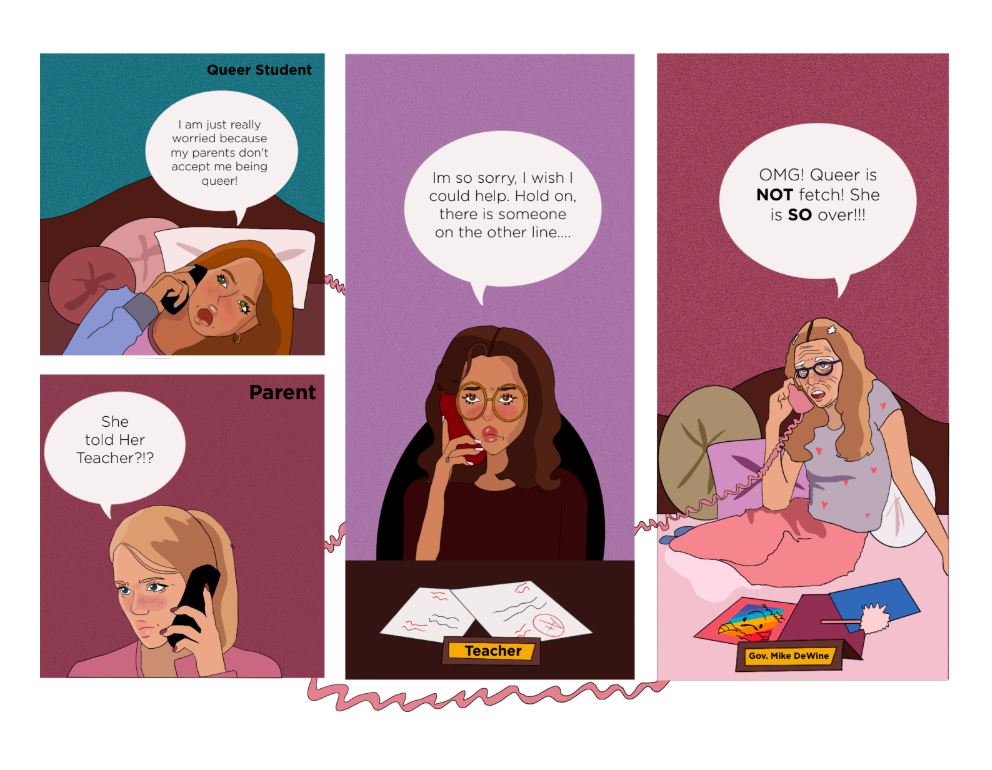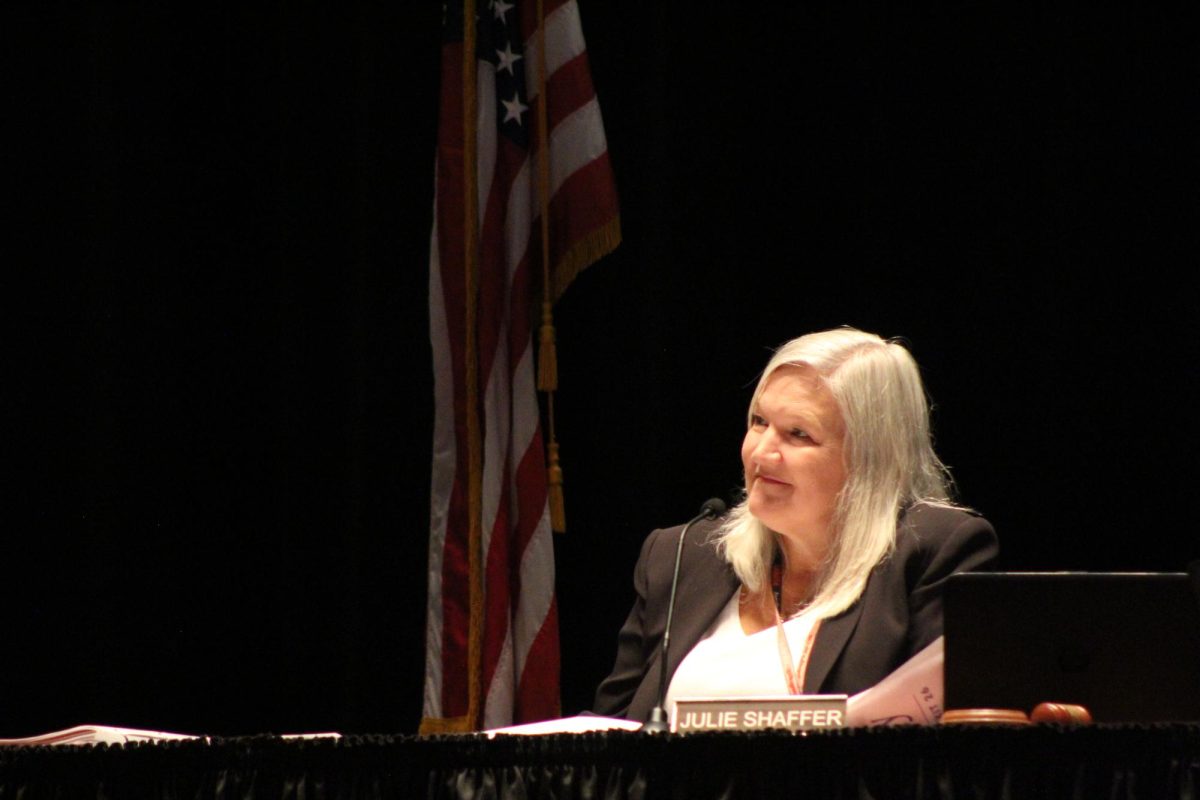Walking through the rows of desks in her classroom, East English teacher Lisa Schmaltz sees students reading, analyzing, and writing behind their computer screens.
Schmaltz is leading one of five practice Ohio State Tests (OSTs) with her CP English 10 students.
“Why do we practice? It’s test familiarity,” Schmaltz told Spark, “and knowing what [the test] is going to look like, and feeling that time constraint.”
OST data is among many data sets that the Ohio Department of Education and Workforce (ODEW) use to “grade” each district, and each school in it on the annual Ohio School Report card. Lakota received 3.5 out of 5 stars on the 2022-23 report card and jumped to 4.5 out of 5 stars in the 2023-24 school year. As an individual school, East received a 4.5-star rating.
The five areas that the state grades a district on are: Achievement, Progress, Graduation, Early Literacy, and Gap Closing.
Lakota Local Schools and East achieved their highest ratings in the Gap Closing category, each receiving five stars. This area evaluates improvement in graduation rates, English learner language proficiency, chronic absenteeism, gifted services, as well as English Language Arts (ELA) and math growth and achievement across different student groups of the district. A high-scoring district would have a high graduation rate, a high Gifted Performance Index, low chronic absenteeism, and high ELA and math achievement scores.
The Graduation score focuses on the 4 and 5-year graduation rates for the high schools in the district. East and West both achieved a 4-star rating.
“We intervene with any students at risk of not graduating on time, as early as freshman year,” Lakota Executive Director of Curriculum and Instruction Lori Brown told Spark.
Lakota achieved a three-star rating in Early Literacy, which measures the ability and growth of reading in students in Kindergarten to third grade.
The district fell short of the 78.0 score required for a four-star rating by 0.1, with a score of 77.9, according to Lakota Director of Curriculum K-6 Emily Herman.
“This year, Lakota has focused on enhancing core classroom instruction to improve early literacy,” Herman told Spark. “The district has adopted and is implementing both an explicit, systematic, and cumulative phonics program in kindergarten through third grade and knowledge building ELA materials kindergarten through sixth grade.” In the Achievement section, Lakota as a district acquired a four-star rating, and so did East. This rating is measured by the district’s performance index (PI), according to the ODEW.
In the Achievement section, Lakota as a district acquired a four-star rating, and so did East. This rating is measured by the district’s performance index (PI), according to the ODEW.
The ODEW uses the data from OST scores that students begin taking as soon as the third grade and continue taking through high school, to make this PI, which determines the Achievement grade.
“I remember taking them since third grade, and typically, I don’t Rating Scale and Descriptions 1 Needs significant 1.5 2 enjoy them,” East Sophomore Liam Martin told Spark.
Due to the importance of OST scoring for the district performance on the state report card, according to Director of Assessment and Accountability Deana Moss, Lakota has developed “OST Action Plans.”
“Action Plans are a structured process by which teachers analyze recent student performance data to determine which instructional areas need reinforcement and which students may need additional support,” Moss told Spark.
For Schmaltz, this means setting up regular practice test-taking for her students, in order to accumulate a data set of OST “checkpoints” before her students take the real thing.
She may then use this data to personalize more practice on specific state standards for individual students, to further improve test-taking skills. Using an online program such as CommonLit allows Schmaltz to ensure each student’s weaknesses are addressed.
“What it is going to take, probably, is a little more personalization and what we call differentiation; not everybody is always going to be doing the same thing,” said Schmaltz.
Practice tests and data sets are how Schmaltz and other East teachers are attempting to raise student OST scores, which then raise the overall school and district ratings.
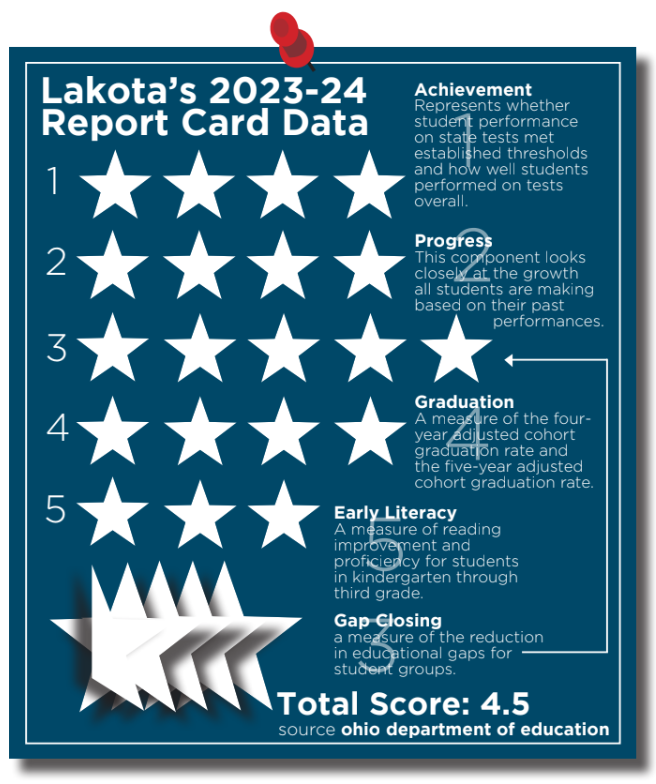
These “standards” for the state tests are set by the ODEW for English and math classes for elementary and middle school students. These also include “end-of-course tests” for certain subjects in high school.
“[State standards] are designed to provide clear, measurable goals for student learning,” said Brown. “Standards help streamline instruction, making sure that teaching practices focus on agreed-upon learning targets, which can lead to improved student outcomes by providing a consistent framework for what students should know and be able to do at each grade level.”
Every student has a projected score and percentage for what their next OST score will be and how likely they are to achieve it.
The last rating, Progress, is based on how well each student performed on their OSTs compared to their estimated improvement. This aims to gauge how each student is growing in each tested area.
“The difficulty is, with the highest achieving students who are predicted to go all the way, how do you then push those students [further],” said Schmaltz.
Along with the Achievement rating of four, Lakota Local Schools and East again both received a four-star rating in the Progress section.
East Principal Robert Burnside attributed these higher scores in the Achievement and Progress areas, for East specifically, to the work that teachers are doing at a classroom level. “I am extremely proud of the work of our teachers, and I think that’s important to know they are truly engaged in the process of helping us move forward,” Burnside told Spark.
“I am extremely thankful for all of the hard work and the dedication that they’ve shown in helping our building grow.”
Achievement and Progress do not only pertain to how students perform on standardized tests or in their class grades but also their desire to take more “rigorous” courses.
“We found that many students were capable of taking higher level courses but were not currently enrolled in them,” said Brown. “We worked to eliminate barriers for students so that more students could access more rigorous coursework for greater challenge.”
Offering more Advanced Placement (AP) and College Credit Plus (CCP) classes at East and West in the 2024-25 school year was considered by Lakota Director of Curriculum and Instruction 7-12 Andrew Wheatly.
“In order to have a culture of rigor, I believe that our learning options for students must match both their appropriate level of challenge and learning that is meaningful,” Wheatley told Spark. “Many of the changes that have been made to the course offerings at Lakota have come with that vision in mind.”
At East, Burnside does not want to make the “traditional mistake” of creating a culture of grades over true learning of information. Superintendent Dr. Ashley Whitely shares the same outlook. “We need to promote a growth mindset in students, where the focus is on continuous improvement rather than solely on grades,” Whitely told Spark.
“We need to encourage a collaborative, student-centered culture where achievement is not measured purely by test scores, but also by progress, effort, and engagement.”
Being able to learn alongside getting good grades is something that is possible according to Martin, who is grade-oriented.
“I take [honors and AP] classes to get a better GPA,” said Martin, “but I feel like to get a better grade, I have to actually learn.”
While she values student achievement and progress, Schmaltz continues to maintain a balance between having students shoot for high OST scores while genuinely absorbing the information and learning the skills necessary for her course.
“The parameters by which schools are judged are out of our control. So that can become problematic,” said Schmaltz. “It’s the same way that we have to play to the test. As I prepare students for the [OST], I think we can only be as prepared as what we know of at the time.”



















